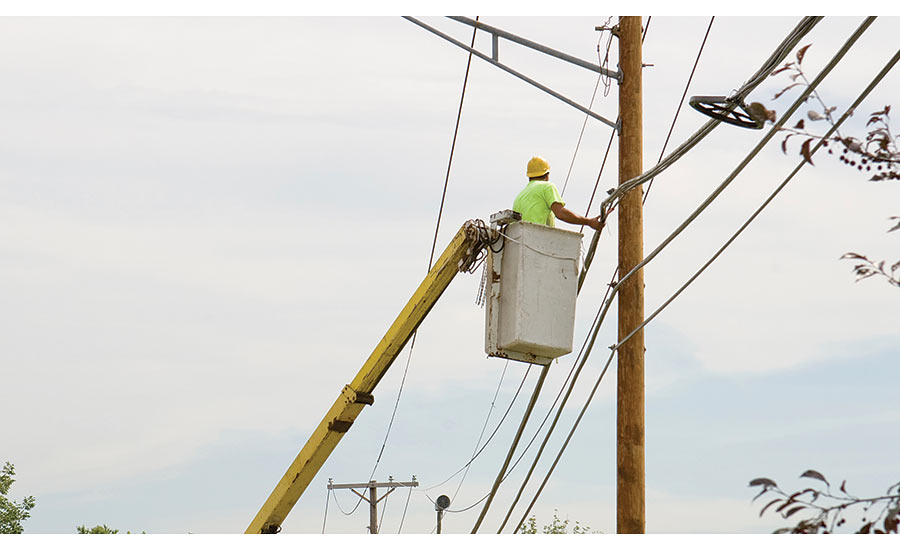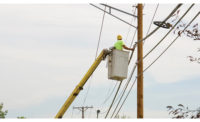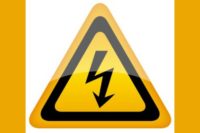Four days before Hurricane Sandy struck in October, 2013, Consolidated Edison Co. sought 1,800 power line repair workers from its fellow utilities to help respond to the massive storm brewing in the Atlantic Ocean, according to the Claims Journal.
It got just 32. Three days later, the New York-based utility boosted its request to 2,500. It got 171.
Con Edison’s difficulties getting help from the industry’s mutual aid program, in which U.S. utilities send workers to other regions during emergencies, show how years of cost cuts and pressure to keep prices low have left utilities less prepared to restore power from the biggest natural disasters.
“Utilities do not have the required field personnel at hand to effectively respond to large storms,” the Moreland Commission, a panel convened by New York Governor Andrew Cuomo to investigate utility storm response and preparation, said in a report.
Union concerns
Years of budget cutting by many utilities have taken their toll on worker training programs and reduced the ranks of experienced linemen, according to the International Brotherhood of Electrical Workers (IBEW). Since deregulation came to the electric industry more than ten years ago, utilities have reduced their line staff by 25 or 30 percent, according to IBEW.
The job of utility linemen is varied and complex. It takes five years to train a lineman to a journeyman level, and most in the industry acknowledge that it takes ten years to become a well-rounded lineman. There is much to learn, said Utility Department International Representative Don Hartley.
“It can be challenging to have a conversation with a group of linemen who have never had to worry about a lack of work or face a layoff,” Bob Gerstle, a 38-year utility industry vet, told Transmission and Distribution World. “After all, there is a shortage of linemen nationally, with a slew of retirements coming in the next 10 years.”
From the front lines
The impact on safety of a shortage of skilled linemen is borne out in an IBEW survey of utility foremen, linemen/servicemen, and apprentices. Asked if doing more with less causes safety concerns, about half of those surveyed said “yes.” If the job requires more manpower than was assigned and the foreman asks for additional help, 75 percent of the time more help is provided, according to the survey.
Employment of line installers and repairers is projected to grow six percent from 2014 to 2024, about as fast as the average for all occupations, according to the U.S. Bureau of Labor Statistics. Job opportunities should be best for those with good technical and mechanical skills. Those looking to become electric power-line installers should have the best job prospects. In 2014, the U.S. workforce of line workers totaled 236,000, with a median annual average salary of $61,740.
Still, demand outstrips supply in segments of the industry. Many foremen and line workers in the IBEW survey said their greatest safety concern was, in the words of one, “not enough linemen to fill the openings and teach the inexperienced.”
Line workers on the front lines, challenged by building or repairing complex, high-voltage equipment while dangling sometimes hundreds of feet in the air, often remarked in the survey that their greatest safety concern is lack of manpower:
“Not enough people to cover in emergencies.”
“More flaggers needed.”
“Too small of crews going the extra effort to get the job done.”
“Foreman is afraid to disappoint management by not getting the job done or asking for more help.”
“More linemen need to be hired.”
“Get more guys.”
“Money seems to be a concern.”
Maintaining safe cultures
Sufficient manpower is crucial to utility/energy industry safety because, as one expert says, “safety isn’t an absolute state. It’s a process and a culture that encourages safe practices and anticipates hazards.” Safety processes and cultures are undermined if there aren’t enough “brother’s and sister’s keepers” observing and correcting at-risk behaviors such as failing to wear FR clothing or fall protection gear, keeping an eye on traffic and weather, and ensuring proper grounding.
Adequate staffing is also needed because many assignments are complex, located in remote areas, and require following hundreds of rules and procedures. Peer-to-peer safety reminders and communication are important to avoid complacency and perform tasks safely such as:
• Wiping down a hot stick before using it and performing a visual inspection;
• Performing a visual inspection and a field air test on rubber gloves before every use;
• Wearing steel-toe boots;
• Inspecting a sling and all its fastenings and attachments before use every time;
• Getting in the habit of placing wheel chocks behind truck wheels every time a boom is in the air.
Reinforcing safe work practices
Line workers and repairers often work in crews. The industry can take a page from the airline industry’s use of crew resource management – CRM -- (also used in medical surgical operations). CRM is a set of training procedures for use in environments where human error can have devastating effects – such as the fatal accidents and life-changing injuries that are risks of line work. Used primarily for improving air safety, CRM focuses on interpersonal communication, leadership, and decision-making in the cockpit.
CRM – or situational awareness – avoids working with tunnel vision. It reinforces safety axioms such as: 1) If you do not have the proper equipment, do not do the job; 2) Never assume the line is dead – if it’s not grounded, it’s not dead; 3) Know and maintain minimum approach distances – insulate and isolate – cover up; 4) Never install or remove grounds by hand – use approved and tested hot-line tools; and 5) Always wear rubber gloves and sleeves if you are working within minimum approach distances.




